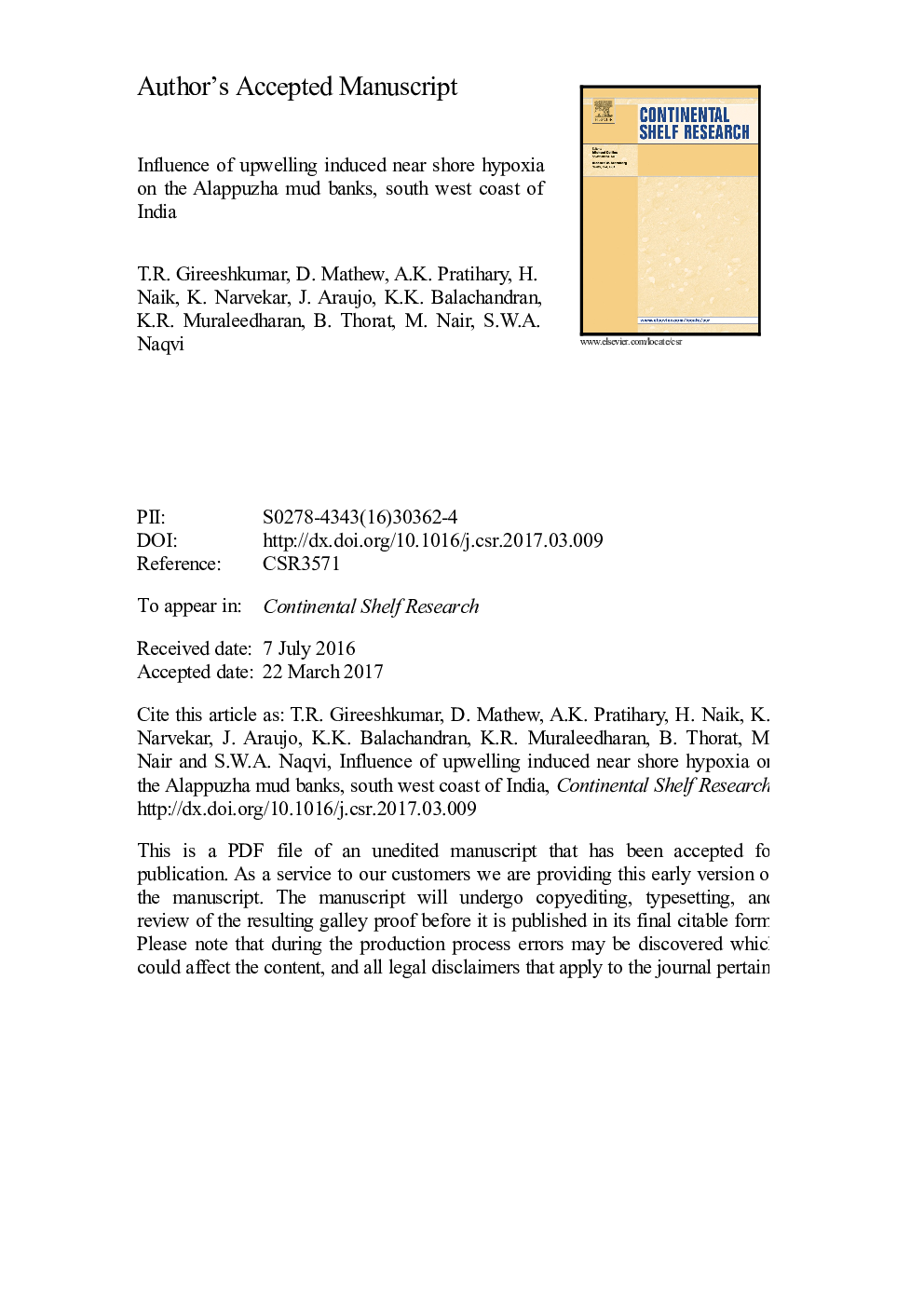| Article ID | Journal | Published Year | Pages | File Type |
|---|---|---|---|---|
| 5764553 | Continental Shelf Research | 2017 | 27 Pages |
Abstract
The results of the first time-series measurements spanning 18-weeks (22 April to 20 September 2014) from a coastal environment (Alappuzha, southwest India), where two process of upwelling and mud banks are concurrent during summer monsoon are presented. The upwelling signals were evident from the 2nd week of May onwards and the intensity varied widely from 1st week of June to 3rd week of September. The formation of mud banks was observed during the peak upwelling period (14th June) and once formed, they were persistent till the end of monsoon season (September 2014). The time-series evolution of dissolved oxygen levels showed the incursion of hypoxic waters well in to the mud banks during peak upwelling period. The considerable reduction in the dissolved methane levels (300 to <50Â nM) during hypoxia is an anomaly, which may be due to some microbial processes. The incursion of hypoxic waters in to the Alappuzha mud banks is the first observation and is significant because, it can now explain why mud banks are not always good fishing grounds. The present study shows that the fish availability is mainly dependent on the incursion and prevalence of hypoxic waters in the mud banks.
Related Topics
Physical Sciences and Engineering
Earth and Planetary Sciences
Geology
Authors
T.R. Gireeshkumar, D. Mathew, A.K. Pratihary, H. Naik, K.U. Narvekar, J. Araujo, K.K. Balachandran, K.R. Muraleedharan, B. Thorat, M. Nair, S.W.A. Naqvi,
